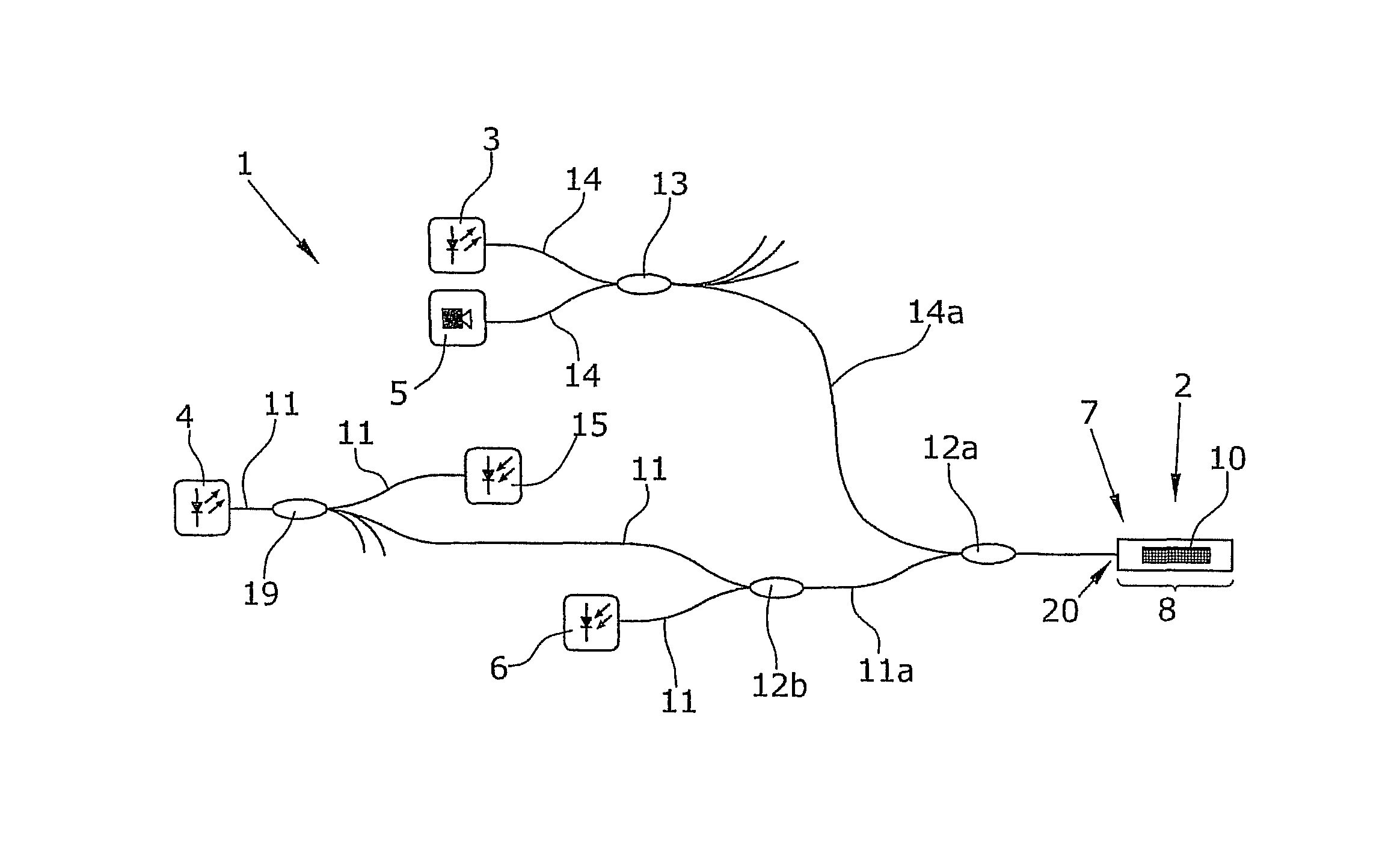Sensor, a system and a method for measuring forces and/or moments
a technology of sensors and moments, applied in the direction of force measurement, instruments, optical elements, etc., can solve the problems of inability to use a plurality of measuring points for temperature measurement, inability to measure the wavelength of fiber bragg grating ex post, and inability to meet the measurement requirements of wavelength and other issues
- Summary
- Abstract
- Description
- Claims
- Application Information
AI Technical Summary
Benefits of technology
Problems solved by technology
Method used
Image
Examples
Embodiment Construction
[0053]FIG. 1 is a schematic illustration of the present system 1 for measuring forces and / or moments on an object. The object is not illustrated in the Figure.
[0054]The system 1 of the present invention comprises at least one sensor 2, a first light source 3, a second light source 4, a first detector 5 and a second detector 6.
[0055]The sensor 2 is formed by an optical fiber 20 comprising a sensor region 8. A fiber Bragg grating 10 is arranged in this sensor region 8. In the sensor region 8, the optical fiber 20 is doped with a fluorescent material not illustrated in the Figure. The exact structure of the optical fiber is illustrated in FIG. 2.
[0056]The first light source 3 and the second light source 4 are connected to the sensor 2 via optical fibers 11, 11a, 14, 14a and coupler elements 12a, 12b. The first detector 5 and the second detector 6 are also connected to the sensor 2 through optical fibers 11, 11a, 14, 14a.
[0057]The first light source 3 preferably generates a broadband l...
PUM
 Login to View More
Login to View More Abstract
Description
Claims
Application Information
 Login to View More
Login to View More - R&D
- Intellectual Property
- Life Sciences
- Materials
- Tech Scout
- Unparalleled Data Quality
- Higher Quality Content
- 60% Fewer Hallucinations
Browse by: Latest US Patents, China's latest patents, Technical Efficacy Thesaurus, Application Domain, Technology Topic, Popular Technical Reports.
© 2025 PatSnap. All rights reserved.Legal|Privacy policy|Modern Slavery Act Transparency Statement|Sitemap|About US| Contact US: help@patsnap.com


